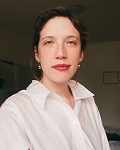2019
E. C. Feiss
- Doctoral Candidate
- University of California, Berkeley

Abstract
This dissertation argues that the War on Poverty was a force traversing several seemingly segregated art worlds active in New York City in the years 1959-1973. African American and Latinx artists employed by community action agencies held sculpture classes in vacant lots in Harlem, utilized empty storefronts on the Lower East Side, and produced street performance with antipoverty’s constituencies. Many of these artists remain undocumented in the history of American art. Others, like the painter Norman Lewis, translated their distinguished practices into pedagogy as part of community action programming. Simultaneously, the emergence of happenings and artistic participation can be read alongside antipoverty’s occupation of urban space. The dissertation seeks to challenge existing narratives concerning the development of American art since the early 1960s by introducing an unrecognized catalyst and correspondent: the liberal state’s antipoverty program and its theories of art, civic participation, and community development.

